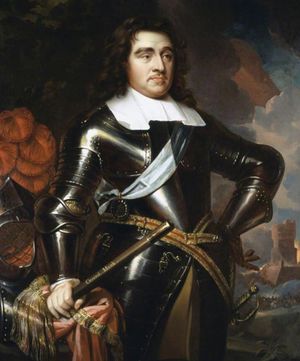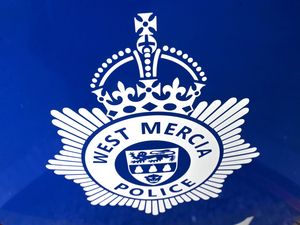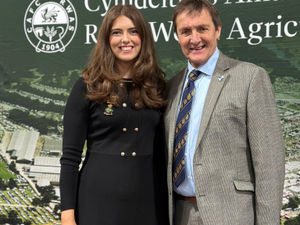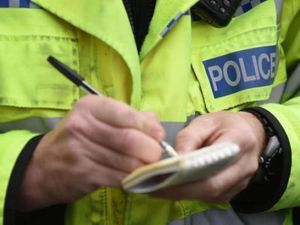The Coldstream Guards: Guarding us with honour since 1650
Christopher Bibb, formerly Captain in the Coldstream Guards and a Vice President of the Shropshire Branch of the Coldstream Guards Association, charts the regiment’s remarkable history as it celebrates 375 years.
Question: name something – anything – whether an invention or institution, that was created 375 years ago and still exists in an essentially similar guise; performing a similar role?
Apart from a few historic buildings…. One, strong answer, would be the Coldstream Guards, the longest continually serving regiment in the British Army: a formation that has fought in every major campaign ever since, from the Napoleonic Wars to Iraq and Afghanistan.
In Crimea, no less than four Coldstreamers were awarded the then recently instituted VC. Mounted on Camels, a detachment of Coldstream helped relieve General Gordon at Khartoum.
The regiment fought in the Boer Wars, and four Battalions served in the fields of Flanders throughout WWI. The 1st Battalion was almost annihilated in the first Battle of Ypres, but the regiment fought on at Mons, Loos, the Somme, Ginchy, and again at Ypres in 1918.
The names of some 27 local Shropshire Coldstreamers lost in the Great War are recorded and commemorated in the Roll of Honour held at St Chads, Shrewsbury.

Readers will be familiar with Garrison Sergeant Major ‘Vern’ Stokes and his role delivering ceremonial aspects of royal events such as King Charles’ coronation. He has featured in the magazine several times, and has spoken for his love of his home county.
For Vern, the adjacent image, underlines two realities: “When thinking about my Regiment’s 375th anniversary, this image helped add perspective.
“Here in Coalbrookdale – birthplace of the Industrial Revolution, and arguably the strength behind the growth of the British Empire – the first steam train was built in 1802 – that was fully 150 years after the Coldstream was formed!
“To join a regiment that has excelled for generations has always filled me with an immense sense of pride. But equally what other institution, apart from the military, would embrace and nurture a boy from Madeley and provide such a long and rewarding career?
“For me, that grounded ethos, pragmatism, adaptability, team spirit…, goes a long way to explaining the Coldstream’s longevity.
“From the start I was spellbound by the stories of sheer bravery and guts. The fighting spirit at Waterloo was pivotal. But there’s so much more.
“People remember Dunkirk. So many escaped, because the perimeter held. The Coldstream were right at the centre of action in the rearguard. Can you imagine? As they dozed behind hastily prepared barricades through the long night on May 31, 1940, they knew the next day would bring either death or imprisonment. Seventy died, thirty-six spent the rest of the war as prisoners, but on June 1 alone, some 64,429 of their comrades were evacuated.”
The birth
The Coldstream Guards were formed in 1650 in the middle of the English Civil War, this was a time when our nation’s greatest institutions existed in a state of flux. Just 17 months earlier Charles I had been executed. In his place Oliver Cromwell, the self-styled ‘Lord Protector’, was consolidating Parliamentary rule and mopping up Royalist rebels. Facing a fresh revolt in Scotland, he requested General George Monck raise a body of fighting men to join his New Model Army.
Monck’s Regiment of Foot saw their first action only days later at the Battle of Dunbar where – as Roundheads – they defeated Scottish Royalists. Trusted by Cromwell, Monck was promoted to Commander-in-Chief of the New Model Army in Scotland and, over the ensuing decade, Monck’s regiment controlled and pacified the Highlands.
The perceptive polymath
Far more than a mere fighting man, Monck proved to be an enlightened, pragmatic and most effective leader. Such was the grip his forces held in Scotland, Monck was able to serve as an MP and, in the greatest of all sabbaticals, became a ‘General at Sea’ in the First Anglo-Dutch War. Serving as an Admiral, he drew successfully upon his unparalleled knowledge of artillery to redefine naval engagement.
A force of nature, proof that he was as canny as he was a polymath, came in 1660. From Scotland, Monck read the runes: Cromwell had died two years earlier. His son Richard had assumed the role of Lord Protector, but Monck recognised he lacked his father’s leadership and ruthlessness. Monck also observed a growing political vacuum at court; a reality matched in the country by a desire among rank and file for fresh elections. He understood the Puritan project had run its course.
Parliament also sensed a turn in the nation’s mood. The desire for a new direction and firm leadership was clear. But Westminster’s growing trust of assurances offered by the late King’s exiled son, Charles II – pointing towards restoration – introduced a jeopardy that perhaps Monck alone foresaw.
Unlike Monck’s Regiment of Foot in Scotland, The army in England – essentially Cromwell’s New Model Army, birthed to fight against Royalists – had been neglected. Morale was low; many soldiers had gone unpaid. The return of the monarchy clouded their future, while their officers suffered conflicting loyalties. Others may have foreseen unrest, but Monck recognised the army probably couldn’t be trusted. Alone, he acted.
The men from Coldstream

Again, he rallied his men – then barracked on the banks of the River Tweed, close to the border town of Coldstream. He gathered and marched his troops – 6,000-strong – to London. They left on New Year’s Day 1660 and arrived in the capital five weeks later. Their presence, discipline and clear loyalty steadied the wider military. Weeks later, Monck was made its Commander-in-Chief.
Unquestionably, his actions were pivotal, paving the way for the restoration of the monarchy and our democracy, together with the freedom for the Church of England, and all the key institutions that characterise Britain to this day.
But still the politicians remained a few steps behind Monck, and it wasn’t until Charles II arrived in England that fears for his life were realised. As predicted the threat came from an army of battle-hardened army Civil War veterans who feared demobilisation.
It was at this point that the ‘men from Coldstream’ secured their place in history. Monck’s Regiment of Foot stood ready to counter unrest within the military. Meanwhile, Monck cleverly defused dissatisfaction by both ensuring soldiers were paid, and by indemnifying them for past acts in the Civil War. Rightly seen as a champion for soldiers’ rights, most historians agree that no man played a bigger part in the Restoration than General Monck.
The King was quick to recognise Monck’s leadership, his political awareness and manifest capabilities. For that and his loyalty – and that of his regiment – he was ennobled, becoming Duke of Albemarle. In his final years, before his death in 1670, he remained a close confident of Charles II.
Upon his death in 1670, 20 years after their formation, Monck’s Regiment of Foot were renamed the Coldstream Guards.
Order of precedence
Arguably, the central tenet behind the British Army’s regimental system is the promotion of competitive spirit: rivalry drives excellence; discipline; rigour; attention to detail; endurance. And, arguably, the greatest rivalry of all exists between the Coldstream and Grenadier Guards.
The latter can trace their history back to 1656 – six years after the Coldstream – but entered the service of the Crown in 1665, to become the First Regiment of Foot, heading thereafter the British Army’s order of precedence.
Becoming the Second Regiment of Foot in 1670, never sat well with the older regiment, whose motto is ‘Nulli Secundus’ (meaning Second to None). It also explains why the buttons on Coldstream uniforms are set in distinctive couplets, whereas the Scots Guards’ are grouped in threes, Irish Guards’ in fours and the Welsh Guards’ in fives, reflecting the latter’s formation in 1915 by order of King George V.
The Coldstream today
While all five Footguards Regiments are known for their high-profile ceremonial duties – they are, first and foremost, front-line infantry units with hard-won reputations as elite fighting forces.
Since the Second World War, generations of Coldstream officers and soldiers have fought in an extraordinary number of countries, including Palestine, Malaya, Borneo, Kenya, Aden, Cyprus, Bosnia, Iraq, Afghanistan, and of course, at home in Northern Ireland. In each, differing skill sets were required, whether responsible for post-colonial policing, anti-terrorism or peacekeeping, in deserts, jungles and built-up areas.
Today the Coldstream are based in Windsor and are part of the 4th Light Brigade Combat Team. Ceremonial duties are mounted by 7 Company from Wellington Barracks, London. This remains something all Coldstreamers will participate in, but performing public duties is only one of many facets.
Recently, the battalion has been responsible for training Ukrainian soldiers and deploying training teams all over Africa. Detachments have also provided security and support for peacekeeping operations in Erbil, Northern Iraq, Afghanistan, Mali, Kenya, Sierra Leone and Ghana.
This October, it deploys to Cyprus as the UN battalion patrolling the Green Line. It’s interesting to reflect that quite a few of those deploying may well have heard tales from their grandfathers, who were present when the Turkish invaded the northern part of the island in 1974.
Perhaps the final words should go to Salopian Lt Colonel Tom Radcliffe, Coldstream Guards, currently commanding the Scots Guards: “375 years feels like an extremely long time – and it is!
“Much has changed in the army, not least we are now pursuing artificial intelligence, complex weapons and remote autonomous systems to assist us in protecting the UK and its interests.
“But I suspect that there are more similarities than there are differences: we still rely on each other, and courage, discipline, integrity and loyalty are as vital today as they were in 1650.
“Soldiers will still get into trouble ‘downtown’ as they did in Coldstream all those years ago, and they can still be relied upon to leap into action against our enemies at the drop of a hat.”
Shropshire Coldstream Association
Although few Salopians serve in the regiment at present, a thriving branch of the Regimental Association exists to support veterans and their families.
If you are a former Coldstreamer, or indeed a veteran of any of the Household Division Regiments, please feel free to contact the branch secretary, Mrs Jayne Griffiths on 07807 231547 for further information regarding membership, social activities, or welfare matters.



